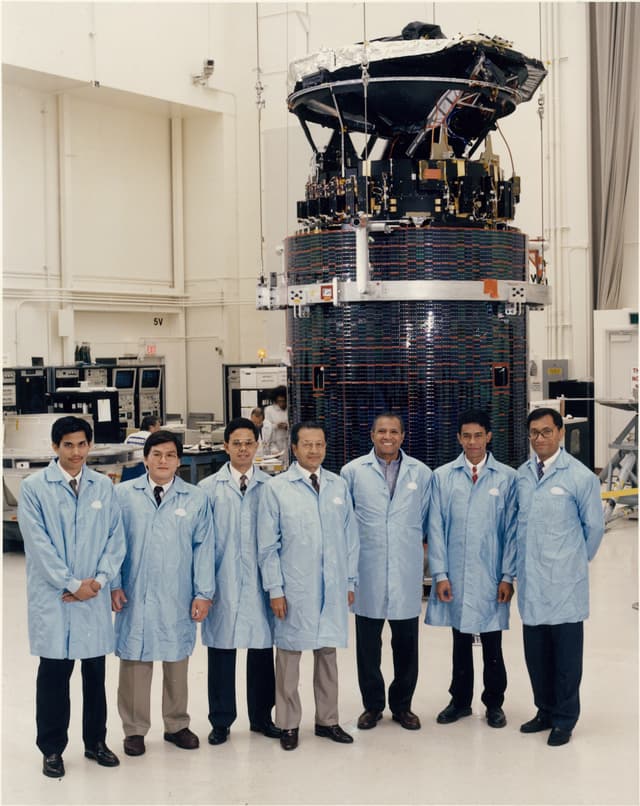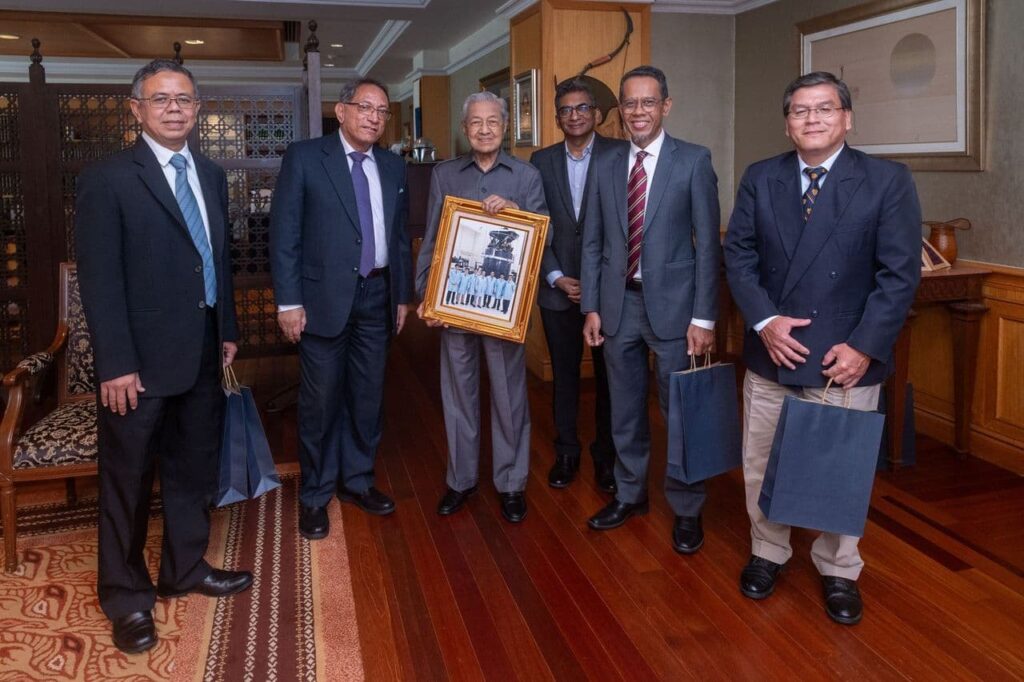ITU160 Partner submission: Technology researcher, Malaysia
Malaysia’s satellite vision: A blueprint for expanding connectivity
Submitted by:
Rakuram Gandhi, Senior Technology & Telecommunications Regulations Specialist
In May 1995, a photograph captured Malaysia’s bold step into the space age: the MEASAT-1 satellite. This image (taken at the High Bay of Hughes Space & Communications in El Segundo, California) symbolized Malaysia’s ambition to become a regional telecommunications hub.
Thirty years later, a meeting at the Perdana Leadership Foundation in Putrajaya honoured this legacy, highlighting the pivotal role of strategic investments and public-private partnerships in transforming Malaysia’s digital landscape.
Those elements, coupled with private-sector innovation, positioned Malaysia as a satellite communications leader, offering lessons for global tech development in line with the mission of the International Telecommunication Union’s (ITU) to foster equitable connectivity.


The genesis of MEASAT
Malaysia’s Vision 2020, launched in 1991, aimed to transform the nation into a developed country by prioritizing technology and innovation. Recognizing the geographical challenges of peninsular Malaysia, Sabah, and Sarawak, satellite technology was championed to bridge the digital divide. The MEASAT (Malaysia East Asia Satellite) project, initiated in 1993, was a cornerstone of this vision. Public-private partnerships were emphasized, with the government setting the policy framework and private investment driving execution.
The late T. Ananda Krishnan, a visionary entrepreneur, played a critical role by funding and spearheading Binariang Sdn Bhd, the company behind MEASAT.
MEASAT-1, launched in January 1996, was Malaysia’s first commercial satellite, providing C-band and Ku-band services for broadcasting and telecommunications across Southeast Asia. This aligned with frameworks set out by ITU’s Radiocommunication Sector (ITU-R) to ensure global radio spectrum coordination for satellites.
Strategic foresight enabled Malaysia to secure orbital slots and frequencies, positioning the nation as a regional technology player. A collaborative ecosystem empowered local engineers to work alongside international partners, such as Hughes (now Boeing Satellite), to deliver MEASAT-1.
MEASAT’s impact on connectivity
MEASAT-1 and its successors revolutionized Malaysia’s telecommunications landscape. By 2000, MEASAT satellites provided broadband, direct-to-home broadcasting, and telecom services to over 300,000 households and thousands of businesses, especially in rural Malaysia.
Satellite television services also reached Indonesia and Brunei Darussalam for the first time, enabled by MEASAT’s advanced satellite infrastructure, which pioneered high-powered Ku-band small dish Direct-to-Home (DTH) broadcasting.
Groundbreaking for Southeast Asia at the time, this technology delivered compact, high-quality regional broadcasting in a high rainfall zone. It operated under distinct brand names and was managed by local companies in all three countries, underscoring MEASAT’s pivotal role in expanding regional networks.
Although MEASAT services eventually ceased outside Malaysia, the initial surge of connectivity spurred wider economic growth and enabled small businesses, schools, and healthcare facilities to access digital tools.
The project’s success hinged on policies such as the Multimedia Super Corridor (MSC), which incentivized tech investments. These efforts aligned with global development goals, particularly Sustainable Development Goals 9 (Industry, Innovation, and Infrastructure) and 10 (Reduced Inequalities).
By leveraging ITU’s standards for satellite communications, Malaysia ensured MEASAT’s interoperability within global networks, enhancing the programme’s regional impact.
During the April 2025 meeting, reflections on the public-private synergy that drove MEASAT highlighted how private-sector agility complemented government vision. This model of collaboration remains relevant for nations seeking to scale tech infrastructure efficiently.
A global model for tech leadership
The MEASAT vision offers a blueprint for developing nations navigating the digital era. Emphasis on strategic investments, local capacity-building, and global partnerships mirrors ITU’s Connect 2030 Agenda, which seeks universal connectivity by 2030. Malaysia’s success demonstrates how satellite technology can overcome geographical barriers, a lesson for countries with similar challenges.
The MEASAT project also underscores the importance of ITU’s role in spectrum management and standardization, which enabled Malaysia to integrate into global satellite networks. Bold policy decisions and trust in private-sector innovation set a precedent for governments aiming to accelerate digital transformation.
As the MEASAT-1 photo reminds us, Malaysia has made a remarkable journey into the space age.
Strategic policies and private-sector partnerships, combined with ITU technical frameworks, have transformed the country into a satellite communications hub that delivers connectivity to tens of millions and inspires regional progress.
Malaysia’s experience offers valuable insights for other countries striving to bridge digital divides. Our MEASAT vision remains a powerful example of what bold leadership can achieve.

Rakuram Gandhi is a Malaysia-based engineer with over 30 years of experience in telecommunications, an inventor, and a technology researcher passionate about documenting Malaysia’s telecommunications history
Disclaimer: The views expressed in this article are those of the author(s) and do not necessarily reflect the views of ITU or imply endorsement.